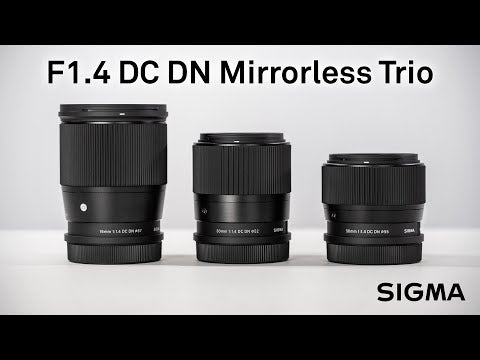Product Description
Experience Excellence with the Sigma 16mm F1.4 DC DN C Contemporary Lens
- Compact and Lightweight Wide-Angle Prime Lens
- Ideal for Landscape Photography and Travel
- Designed for Use with APS-C-format Digital Cameras
- Intricate Lens Structure with 16 Elements in 13 Groups
- Incorporates 3 FLD, 2 SLD, and 2 Aspherical Glass Elements
- Smooth, Fast, and Near-Silent Autofocus Performance
- Significantly Reduced Lens Glare, Flare, & Ghosting
- Bright, Wide, and Wholly Versatile Maximum f1.4 Aperture
- Compatible with In-Camera Image Stabilisation
- High-Quality Dust & Splash-Proof Lens Structure
- Brass Bayonet Mount for Ensured Accuracy & Durability
- Premium Performance that Rivals Sigma's Art Series

High performance, even in low light
Combining a comfortable wide-angle design with an ultra-fast maximum aperture, the 16mm f/1.4 DC DN is a standout lens in Sigma's Contemporary series, designed specifically for APS-C-format mirrorless cameras. Its bright f/1.4 aperture excels in low-light conditions and offers enhanced control over depth of field for captivating selective focus effects.

Stunning Sharpness & Clarity
The optical design, featuring multiple low dispersion and aspherical elements, effectively controls colour fringing and various aberrations, ensuring exceptional sharpness and clarity across the aperture range. Additionally, a Super Multi-Layer Coating minimises flare and ghosting, enhancing contrast and colour accuracy, even in challenging lighting scenarios. The lens is equipped with a stepping AF motor, delivering swift, precise, and near-silent autofocus performance suitable for both photography and videography.

Perfectly Balanced
Part of the Contemporary line in Sigma's Global Vision series, this lens strikes a perfect balance between convenience and performance. Its compact, lightweight construction and versatile handling complement its outstanding optical capabilities.
Wide-angle prime lens designed for APS-C-format mirrorless cameras, providing a 24mm equivalent focal length.

Captivating Imagery
The bright f/1.4 maximum aperture excels in low-light conditions and offers enhanced control over depth of field for achieving captivating selective focus effects.
Two Special Low Dispersion (SLD) elements and three F Low Dispersion (FLD) elements minimise colour fringing and chromatic aberrations, ensuring superior clarity and colour accuracy.

Two aspherical elements are employed to reduce distortion and spherical aberrations, contributing to overall sharpness and accurate rendering.
The Super Multi-Layer Coating minimises lens flare and ghosting, enhancing contrast-rich and colour-neutral imagery, even in backlit conditions.
The stepping AF motor delivers fast, precise, and near-silent autofocus performance.

Depth of Field
The rounded nine-blade diaphragm ensures smooth and pleasing bokeh quality.
The brass bayonet mount ensures accuracy and durability, while rubber sealing in the mount design renders it dust and splash-resistant.

Payment & Security
Your payment information is processed securely. We do not store credit card details nor have access to your credit card information.






















